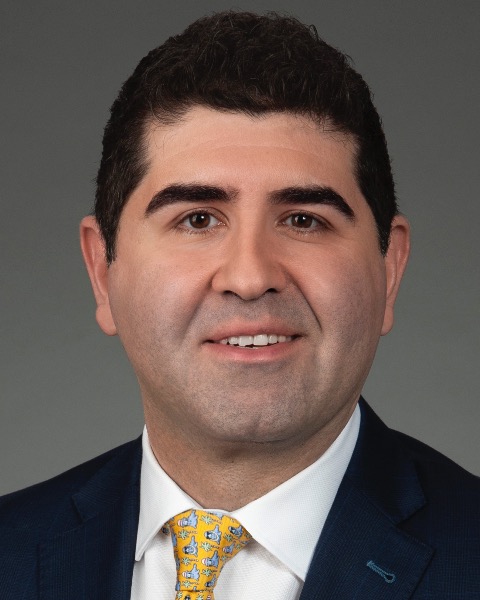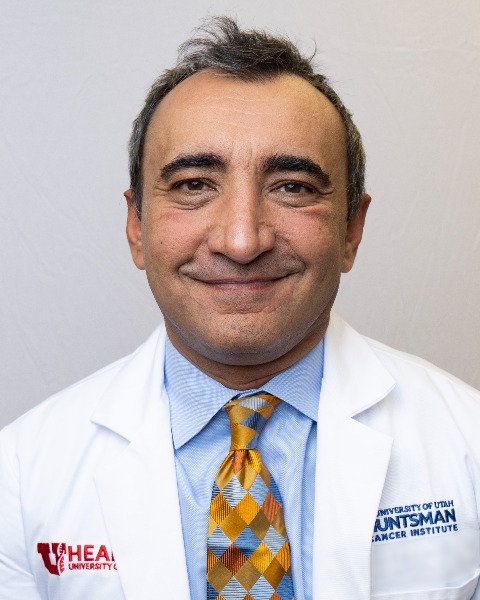Portal Hypertension
A Retrospective Study on Transjugular Intrahepatic Portosystemic Shunts Primary and Clinical Outcomes: Comparison between 6mm, 8mm, 10mm and 12mm Diameter Stents.

Howard H. Dabbous, MD
Research Fellow
Emory UniversityDisclosure(s): No financial relationships to disclose

Mohammed Loya, M.D
Assistant Professor
Kaiser Permanente- MC
Mircea Cristescu, MD, MBA
Faculty
Medical College Wisconsin 
Nima Kokabi, MD
Associate Professor of Radiology
University of North Carolina - Chapel Hill- RS
Ram Subramanian, MD
Professor of Medicine and Surgery
Emory - RF
Ryan Ford, MD
Associate Professor
Emory - GR
Giorgio Roccaro, MD, MSCE
Assistant Professor
Emory Universtiy - JM
Joseph Magliocca, MD
Associate Professor of Surgery
Emory University 
Wael Saad, MD
Senior Vascular and Interventional Radiologist
University of Utah
Bill Majdalany, MD, FSIR (he/him/his)
Associate Professor
University of Vermont Medical Center
Poster Presenter(s)
Author/Co-author(s)
To compare primary and clinical outcomes in transjugular intrahepatic portosystemic shunts (TIPS) of sizes 6, 8, 10, and 12 mm.
Materials and Methods:
A retrospective analysis of patients who underwent TIPS creation between 2004 and 2022 was performed. Data was collected on baseline characteristics (age, gender, MELD-score, Child Pugh (CP) score, and indication for TIPS) and on peri- and post-procedural variables (stent size, angioplasty balloon size, and adjunct procedures, e.g., embolization, paracentesis and thoracentesis). Technical success of TIPS creation, pre- and post- TIPS portosystemic gradient (PSG), clinical resolution of the indication, and hepatic encephalopathy (HE) occurrence were recorded. Primary outcomes included 30- and 360- day TIPS patency, 30- and 360- day liver transplant (LT) rates, and 360-day TIPS revision and mortality rates.
Results:
A total of 634 patients were appraised with 30, 111, 358, and 135 patients for TIPS sizes of 6, 8, 10, and 12 mm as ordered respectively throughout the results. TIPS creation was technically successful in 634 patients (100%). Mean MELD and CP scores was 21.2 and 9.7 for 6 mm, 15.4 and 8.6 for 8 mm, 14.8 and 8.5 for 10 mm, and 16.3 and 8.9 for 12 mm TIPS. The Pre-TIPS PSG (in mm Hg) was 17.4, 16.0, 16.7, and 15.0 with post-TIPS PSG (mmHg) being 10.3, 6.9, 5.9, and 4.4, respectively. Average percent reduction in PSG for the 4 different TIPS sizes were -40.5%, -54.6%, -63.4%, and -69.5%, respectively. Resolution of variceal hemorrhage at 90 days was 6/9 (67%), 37/46 (80%), 145/157 (92%), and 58/65 (89%), respectively. At 90 days, decreased ascites/hydrothorax was 8/14 (57%), 30/39 (77%), 104/134 (78%), and 32/40 (80%) and new or worsening HE was 10/21 (48%), 16/84 (19%), 87/280 (31%), and 38/76 (50%). The 30 day TIPS patency rates were 22/24 (92%), 87/88 (99%), 287/291 (99%), and 92/94 (98%), respectively. Within 30 days post-TIPS 2, 6, 8, and 7 patients received LT, respectively. At 360-days, the respective patency rates were 4/9 (44%), 43/45 (96%), 166/175 (95%), and 59/61 (97%). The 360-day revision rates were 18/30 (60%), 23/111 (21%), 69/358 (19%), and 21/135 (17%). Within 360 days post TIPS 7, 10, 41, and 16 patients received LT, respectively. 360-day mortality was 9/25 (36%), 29/84 (35%), 68/284 (24%) and 29/106 (27%). At 360-days, there were 5 (17%), 27 (24%), 74 (21%), and 29 (21%) patients with pending or lost to follow-up.
Conclusion: TIPS in the 8-12 mm size range had comparable outcomes, while TIPS less than 8 mm demonstrated a higher rate of revisions.

.jpg)
.png)
.jpg)
.png)
.png)
.png)
.jpg)
.png)
.png)